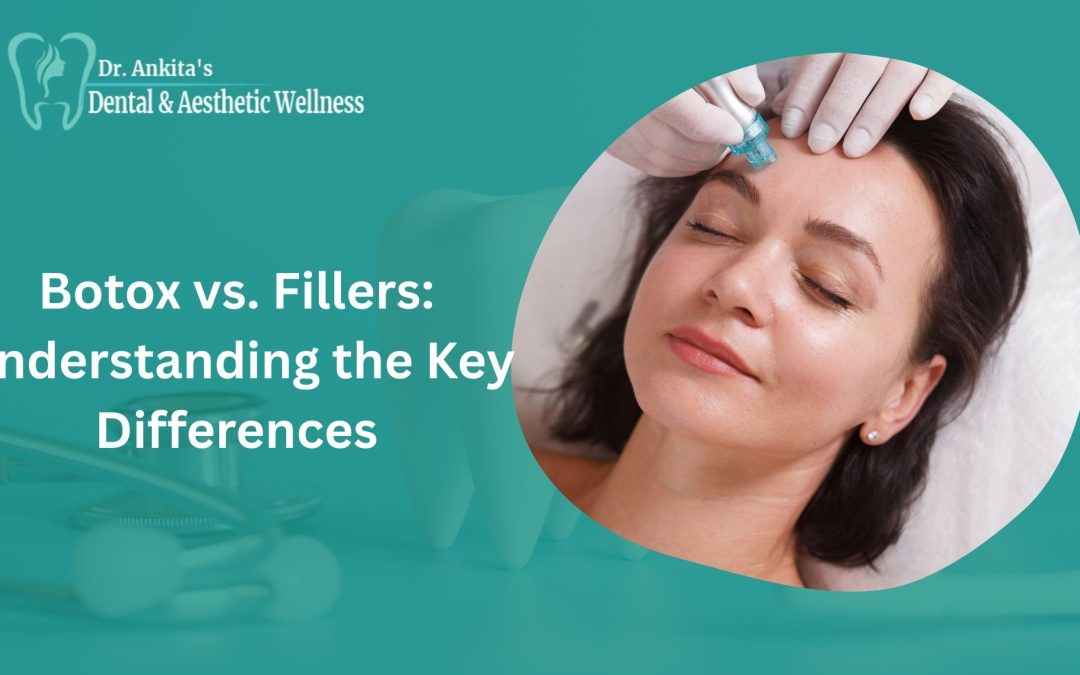In the world of cosmetic treatments, Botox and dermal fillers are two of the most popular options for achieving a youthful, refreshed look. While both aim to reduce the signs of aging, they work in very different ways and are suited for different concerns. Many people confuse the two or assume they serve the same purpose, but understanding their differences is key to making the right choice for your beauty goals.
Let’s break down what Botox and fillers are, how they work, and which treatment may be right for you.
1. What Is Botox and How Does It Work?
Botox is a purified form of botulinum toxin that works by temporarily relaxing specific muscles. When injected into targeted areas, it prevents those muscles from contracting, which in turn smooths out fine lines and wrinkles caused by repetitive facial expressions.
Common areas treated with Botox include:
- Forehead lines
- Frown lines (between the eyebrows)
- Crow’s feet (around the eyes)
Since Botox works by addressing muscle activity, it’s most effective for dynamic wrinkles—the ones that appear when you smile, squint, or frown. Results typically last 3–4 months, after which follow-up treatments are recommended to maintain a smooth appearance.
2. What Are Fillers and How Do They Work?
Dermal fillers, unlike Botox, do not affect muscle movement. Instead, they are gel-like substances injected beneath the skin to restore lost volume, enhance contours, and smooth out static wrinkles (the ones visible even when your face is at rest).
Most modern fillers use hyaluronic acid (HA), a substance naturally found in the skin that helps retain moisture and plumpness.
Fillers are commonly used for:
- Adding volume to the cheeks
- Plumping thin lips
- Smoothing nasolabial folds (lines from nose to mouth)
- Softening marionette lines (lines from mouth to chin)
- Enhancing jawline or chin definition
Depending on the type of filler used, results can last from 6 months up to 2 years.
3. Botox vs. Fillers: The Key Differences
While both treatments aim to rejuvenate the face, their differences are significant:
- Function:
- Botox relaxes muscles to reduce wrinkles.
- Fillers add volume to smooth lines or enhance features.
- Best for:
- Botox: Dynamic wrinkles caused by movement.
- Fillers: Static wrinkles, volume loss, or facial contouring.
- Duration:
- Botox lasts about 3–4 months.
- Fillers last 6–24 months, depending on the product.
- Results:
- Botox offers subtle softening of expression lines.
- Fillers provide immediate plumping and structural enhancement.
- Age Considerations:
- Botox is often preferred by younger individuals looking to prevent early wrinkles.
- Fillers are more common in people experiencing volume loss with age.
4. Can Botox and Fillers Be Combined?
Yes, many people choose to combine Botox and fillers for a comprehensive anti-aging approach. For example, Botox can smooth forehead wrinkles while fillers restore cheek volume and plump lips. Together, they create a more youthful yet natural-looking result.
This combination is often referred to as a “liquid facelift,” as it provides noticeable rejuvenation without the need for surgery or downtime.
Conclusion
While Botox and fillers treatment are both excellent options for facial rejuvenation, they serve different purposes. Botox is ideal for treating expression-related wrinkles, while fillers are best for restoring lost volume and enhancing facial contours. The choice depends on your specific concerns, age, and beauty goals.
If you’re considering either treatment, consult with skilled professionals who can guide you toward the right option. Dental & Aesthetics provide the best services regarding this, offering expert care and advanced techniques to help you look and feel your absolute best.

